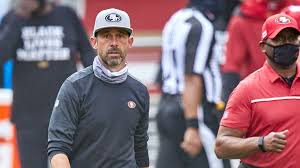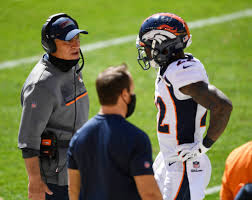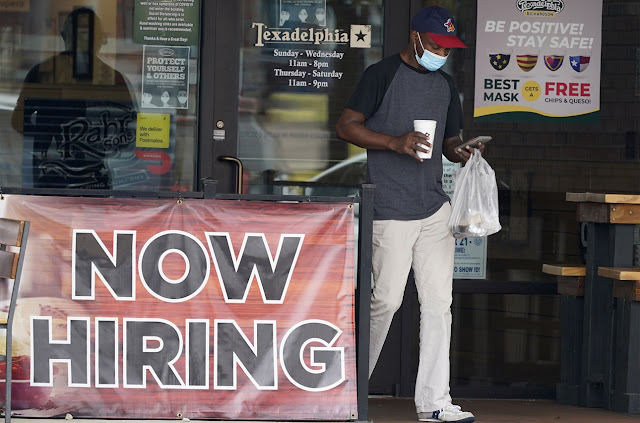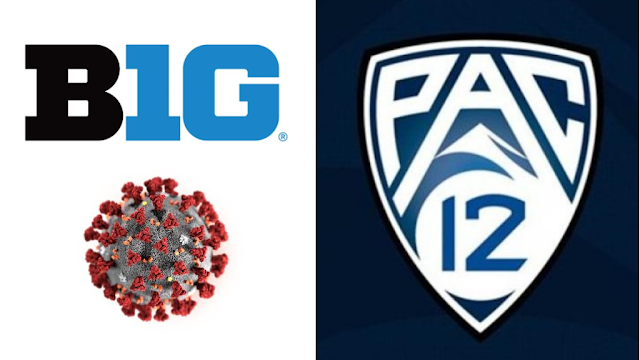District of Columbia
As of May 16:
Mayor Muriel Bowser ordered the use of masks or face coverings when conducting essential business or travel and social distancing isn't possible.
Masks or other face coverings are required in grocery stores, pharmacies and takeout restaurants. On public transportation, face coverings are required if individuals are unable to be six feet apart.
Children between the ages of 2 and 9 are advised to wear masks.
Hawaii
As of April 20:
Both customers and employees at essential businesses are required to wear cloth face coverings. Establishments must limit the number of customers allowed in and keep them six feet apart.
Anyone who violates those rules could face a fine of up to $5,000, or up to a year in prison if found guilty, according to Hawaii Gov. David Ige's order.
Illinois
As of May 1:
Gov. J.B. Pritzker ordered the use of face masks for anyone stepping outside their house.
Face coverings are required while shopping at essential businesses, traveling on public transportation, picking up food, or visiting the doctor and it's impossible to stay six feet apart.
Indiana
As of July 27:
Gov. Eric Holcomb announced that a statewide mask mandate will go into effect on July 27 due to the increase in the state's positivity rate and some counties seeing increases in cases.
The mask mandate applies to anyone who is 8 years and older, and is required in indoor public spaces, commercial entities, while using transportation services and outdoors where social distancing isn't possible.
The mask mandate will remain in effect indefinitely.
Kansas
As of July 3:
An executive order was issued by Gov. Laura Kelly mandating face masks must be worn statewide in public spaces.
Kentucky
As of May 11:
Gov. Andy Beshear ordered all state residents to wear face masks in public.
Beshear has said that people will not be fined or arrested for not wearing a mask in public, but the order gives businesses the right to turn away any customer not wearing a face covering.
Louisiana
As of July 13:
Gov. John Bel Edwards announced a statewide mask order for everyone 8 years and older.
Parishes in the state can opt-out of the mask mandate if they don't have a high positivity rate, but Edwards said only three would qualify to do so right now.
Maine
As of May 1:
Gov. Janet Mills issued an order requiring face coverings or masks for anyone over the age of 2 in indoor public spaces such as supermarkets, retail stores, pharmacies, and doctor's offices.
Maryland
As of April 18:
Commuters must wear face coverings while using Maryland's public transit, according to Gov. Larry Hogan's order.
Employees of essential businesses and customers over the age of 9 must wear face coverings. Adults accompanying young children should make an effort to get them to wear a mask.
Massachusetts
As of May 6:
Governor Charlie Baker issued an order requiring the use of face coverings or masks in both indoor and outdoor spaces where social distancing isn't possible.
Children under the age of 2 do not have to adhere to this order.
Michigan
As of June 18:
Michigan requires all residents to wear face coverings or masks in all public settings.
Businesses are allowed to deny entry to individuals not wearing face coverings.
Minnesota
As of July 25:
Gov. Tim Walz has issued an executive order that requires the use of masks in indoor public places while using public transportation and while outdoors where social distancing isn't possible. Children under the age of 5 are exempt from the mask mandate.
Montana
As of July 16:
Face coverings are now required in certain indoor business settings for counties with four or more active Covid-19 cases, according to a new directive issued by Montana Gov. Steve Bullock (D). Residents attending outdoor gatherings of 50 or more people when social distancing isn't possible will also require face coverings.
Nevada
As of June 24:
Nevada requires anyone in any public space to wear a mask. Nevada Gov. Steve Sisolak's office said this includes while using public transportation, in public-facing work environments, while patronizing businesses, or interacting with others in any generally publicly accessible space.
"For Nevada to stay safe and stay open, we must make face coverings a routine part of our daily life," Sisolak said.
New Hampshire
As of August 11:
New Hampshire Gov. Chris Sununu issued an order requiring masks to be worn at gatherings of more than 100 people. New Hampshire is the only New England state that does not have a statewide mask mandate in public where social distancing cannot be maintained.
New Jersey
As of April 8:
New Jersey was the first state to require customers and employees to wear face coverings at essential businesses and construction sites. Businesses must provide them to employees and deny entry to any customer who refuses to wear them (though customers can still pick up food or medicines in other contact-free ways).
Commuters on New Jersey's trains, buses, and light rails must wear face coverings. If they refuse, they may be denied entry.
New Mexico
As of May 16:
Adults are required to wear masks in all public settings, except while eating, drinking, exercising, or for medical reasons. Masks are recommended for children 3 and older, and children 5 and under must have adult supervision.
New York
As of April 17:
Gov. Andrew Cuomo's executive order mandated state residents to wear masks in public.
All residents over age 2 must wear masks or face coverings when in public and social distancing is impossible.
North Carolina
As of June 26:
Gov. Roy Cooper requires that face coverings be worn whenever people are out and about in public and where physical distancing is not possible. A number of businesses, such as restaurants and hair salons, also will require both employees and customers to wear face masks.
"We need to all work together so we can protect our families and neighbors, restore our economy, and get people back to work and our children back to school," Cooper said in announcing the requirement.
Ohio
As of July 23:
Gov. Mike DeWine announced during a news briefing that there will be a mask mandate that requires people to cover their nose and mouth when inside public spaces or outside when social distancing is not possible.
Oregon
As of July 1:
Gov. Kate Brown has now required the state's residents to wear face coverings in all indoor public spaces beginning July 1. Face covering requirements are already mandated in eight counties but this would broaden the mandate to the whole state.
"I do not want to have to close down businesses again like other states are now doing," Brown said in a statement.
"If you want your local shops and restaurants to stay open, then wear a face-covering when out in public," she added.
Pennsylvania
As of April 19:
Essential businesses must provide and require their employees to wear masks, according to the order from Pennsylvania's Department of Health. Customers at these businesses must wear masks while on the premises or be denied entry.
Puerto Rico
People are required to wear face coverings when in public spaces. Businesses must ensure customers are wearing face coverings.
Rhode Island
As of May 8:
Gov. Gina Raimondo issued an order requiring all residents over the age of 2 to wear face coverings or masks while in public settings, whether indoors or outdoors.
Texas
As of July 3:
Gov. Greg Abbott issued an executive order that will require residents in counties with 20 or more active Covid-19 cases to wear face coverings in public. It takes effect midday on July 3.
The order says that failure to comply could be punishable by a fine.
Vermont
As of August 1:
Cloth face coverings are now required in public places -- both indoor and outdoor -- and in group living settings across the state anytime it's not possible to keep a 6-foot distance from other people who are not a part of your household.
There are exemptions for people exercising outdoors, children under the age of two, anyone with a medical or developmental condition that is complicated by a face covering, and those with difficulty breathing.
Virginia
As of May 29:
Gov. Ralph Northam instituted a statewide mask mandate that requires residents aged 10 and older to wear a mask when entering or spending time in establishments such as restaurants, grocery stores, and train stations.
Washington
As of June 26:
Gov. Jay Inslee instituted a mask mandate that requires everyone to wear a mask or face covering in an indoor public space and in outdoor public spaces where social distancing isn't possible.
West Virginia
As of July 6:
Gov. Jim Justice issued an executive order that he said would require all West Virginians 9 years old and up to wear a face mask anytime they are in public and indoors and where they are unable to maintain six feet of social distancing.
Justice said he issued the order after the state experienced its highest daily total of new cases over the July 4th weekend.
"I know it's an inconvenience, but it's not going to be much of an inconvenience," Justice said. "If you don't decide to wear the face-covering for yourself if you don't decide to wear it for one of your loved ones or your friends, do it for the 95 West Virginians that have died, do it for the 95 people that we've lost."
Wisconsin
As of August 1:
Gov. Tony Evers issued a public health emergency and an emergency order that requires a face covering to be worn when indoors or in an enclosed space and not in a private residence, for residents who are 5 and older. The order is set to expire on September 28.







































